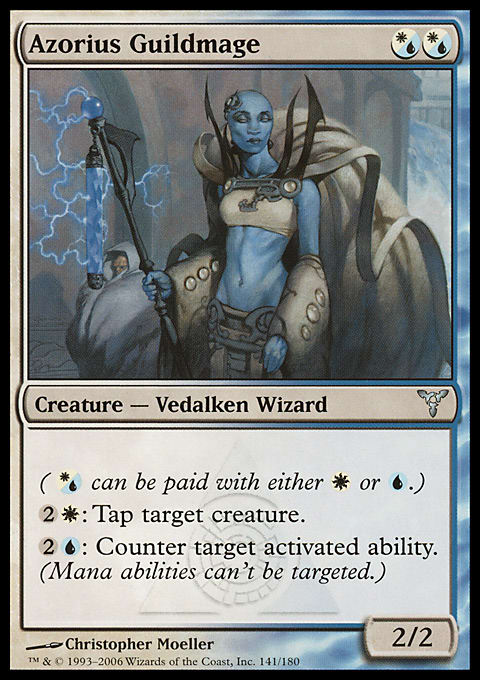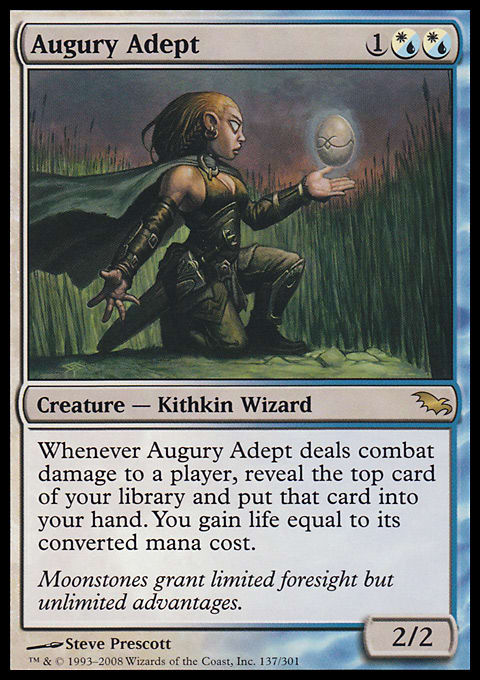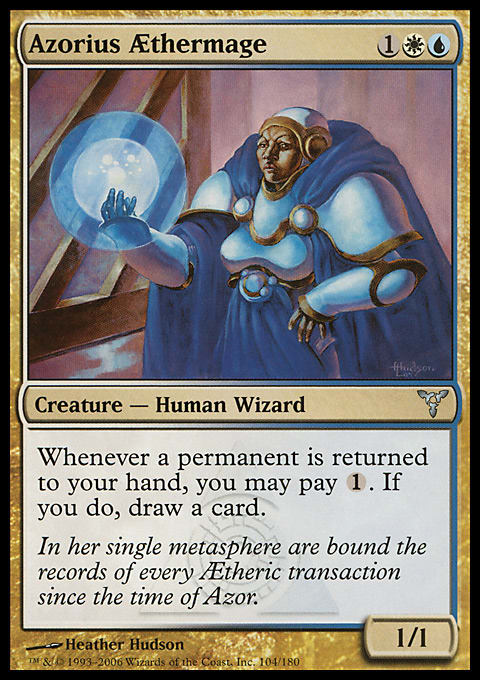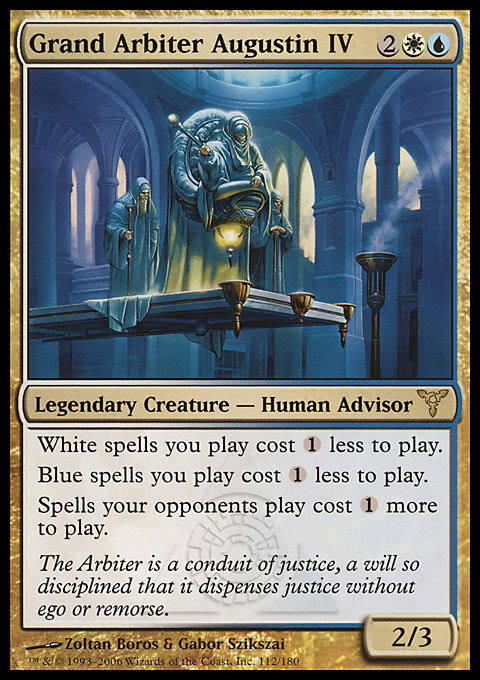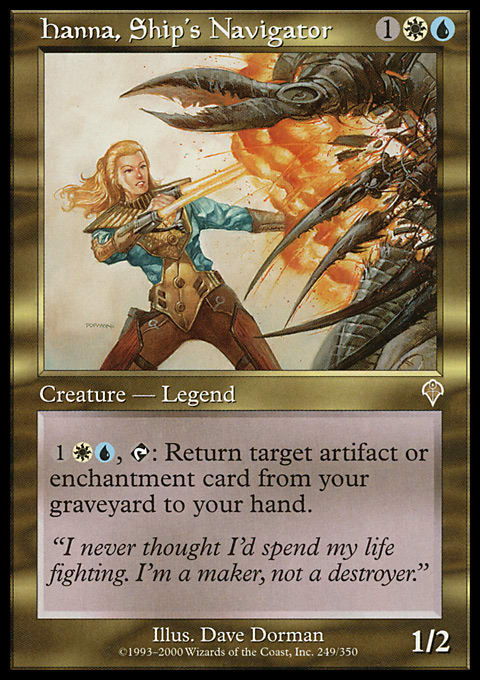With Return to Ravnica just around the corner, it’s worth taking a look at what the guilds have to offer for Commander players. After all, the last time we were in Ravnica, Elder Dragon Highlander was only being played by half a dozen people in Alaska.1 Each week, I’m going to look at the strengths, weaknesses, and hidden gems of each of the five RTR guilds and assess the playability of each potential commander in those colors.
Obviously, I’ll start with Azorius (W/U) this week, followed by Rakdos (B/R), Selesnya (G/W), Golgari (B/G) and Izzet (U/R). Once we’re a little closer to the next set, Gatecrash, I’ll look at those guilds, too: Boros (R/W), Dimir (U/B), Gruul (R/G), Orzhov (W/B) and Simic (G/U).
The reason I’m starting with the allied colors is that there are so many more legends in those colors, and I’m kind of hoping that by the time September rolls around, we’ll have another couple of enemy-colored legends to look at.
Strengths
Azorius is the color of strict law and order; protection, denial, and resource management are the guild’s hallmarks.
To be honest, I only have one Azorius deck, and I am unlikely to build another because of how Azorius typically plays. Blue has traditionally been the color of denial, and white is the new blue. There’s nothing wrong with playing control, but I don’t trust myself to build a W/U control deck that anyone would enjoy playing; I would turn to the Dark Side faster than Anakin’s inexplicable corruption in Episode 3.
On the other hand, if you don’t mind grinding your opponents under your boot heel and drinking their pitiful tears of desperation (usually while claiming the moral high ground), this is the guild for you.
Got Your Back
White and blue probably offer more to each other in terms of covering their respective color pie weaknesses than any other allied-color pairing. Blue is the worst at removing permanents, and white is by far the weakest at drawing cards, but their allies are the best in both areas—peanut butter and chocolate pie, if you will. Blue mages will love getting to sweep the board with cards like Akroma's Vengeance and Rout, while white can revel in the ability to draw cards from . . . well, everything. Compare this to Rakdos, where the two colors share their primary vulnerability to enchantments, and you’ll see what I mean.
Just Say No
Between the two of these colors, there’s nothing you can't stop from happening. Counterspells are the obvious solution; this is blue’s bailiwick, although white adds something with gold spells Absorb, Swift Silence, and Overrule. But white also adds other forms of denial, such as untargetability (Leyline of Sanctity and Seht's Tiger), damage prevention, and other ways of saying, “No,” such as Orim's Chant, Silence, Peace Talks, and Voidstone Gargoyle.
Even if you do get to resolve your permanents against Azorius, they aren’t safe. Other colors have access to Pithing Needle and Phyrexian Revoker, but Azorius takes it to the next level with spells like Stifle, Voidmage Husher, and Azorius Guildmage. Stopping your opponents from doing anything doesn’t bring you any closer to winning, but it sure makes it hard to lose!
Crowd Control
In duels, white normally has this covered with a variety of sweepers that is, regrettably, second to none. Blue gets to pitch in with bounce spells like Evacuation, Inundate, and the criminally underplayed Wash Out. But in multiplayer, you may be able to prevent more damage to yourself with permanents like Teferi's Moat, Stormtide Leviathan, and nonpolitical all-stars Ghostly Prison and Propaganda. Azorius also has most of the best walls in the game, from Wall of Omens to Wall of Tears to Wall of Denial.
Weaknesses
Azorius offers pretty much the full package, but there are a few chinks in the armor. White and blue offer some recursion and tutoring, but not very much (which is why black and green are so popular in Commander). Most importantly, they are completely lacking in reach: the ability to deal damage without attacking. The best way around this is probably to make use of blue’s unblockability and white’s ability to give its creatures protection in order to allow your creatures to punch through an opponent’s defenses—think Distortion Strike on Serra Avatar—but this strategy is dependent on keeping your dudes on the battlefield.
Other options include locking down your opponents and gaining so much life that they don’t have enough reach either.
Hidden Gems
Aethermage's Touch – This is the kind of card Brandon Isleib loves: something that completely ignores the color pie and lets you use the strengths of one color in a deck without that color. Azorius gets to play in green’s wheelhouse with this precursor to Summoning Trap. Either a last-minute blocker in a pinch or a carefully selected card placed near the top of your library is going to enter the battlefield at a time of your choosing, stick around for your next turn so that you can attack with it, and then return to the aether whence it sprang so that you can cast it again and milk its enters-the-battlefield effects for more value. Some combination of this, Angelic Chorus, Ponder, and Serra Avatar sounds like fun to me!
Augury Adept – I don’t usually use Whispersilk Cloak, but when I do . . .
Azorius Aethermage – Bouncey, bouncey, bouncey, bouncey!
Dismantling Blow – It’s no Orim's Thunder, but for 1 colorless mana more than the noble Disenchant, you buy the option to draw two extra cards if you have the mana free in the late game. It’s a budget staple.
Drogskol Reaver – Lifelink and drawing cards can sometimes let you win by default; Reaver is well worth the cost.
Godhead of Awe – Here’s some insidiously effective board control.
Mirrorweave – It’s not exactly secret tech, but if you didn’t know this existed, you’ll be happy you did.
Palliation Accord – Build up counters on each player’s turn as they use their creatures, regardless of whom they attack. At some point, many opponents will feel that attacking you is pointless, and they’ll just attack someone else (this is obviously a mistake, but you don’t have to be the one to tell them). Drop this early, and you’ll be reaping the benefits all game long.
Reparations – It has flavor text that’s easily among the dumbest ever written, but against some decks, this will be a horrific beating. Between drawing resources to replace the resources your opponents blast, deterring spot removal, and sending spells at your other opponents, a Reparations is a relatively low-cost and reliable card to put in any W/U deck, and it’s a house in certain matchups and metagames. Don’t just think of Terrors and Lightning Bolts from aggro decks either; a sneaky Persuasion-type theft deck will also find it impossible to keep up with the cards you draw from Reparations.
Sanctum Plowbeast – Because mana fixing is nothing to sneeze at, especially in these colors.
Thoughtweft Gambit – It’s a tad pricey, but this card offers you some combination of fogging an attack, trapping an attacker with suddenly-untapped blockers, and subduing your opponents’ creatures prior to your attack step (and also presenting opportunities for your opponents to attack each other while you sit comfortably behind your pillow fort).
Vanish into Memory – Protect your creature, filter a boatload of cards, and double up on your ETB effects. Am I missing something, or this seriously good?
Meet the Boss
For each guild, I want to go through the various legendary creatures that are available for use as commanders. For the allied guilds, which have more than a dozen legends each, I’ll rank them into tiers, but don’t read too much into that: I’m sure someone out there has an awesome deck built around the lamest commanders,2 while someone else will have a weak deck based on the strongest card—just because it’s the perfect champion for his or her Advisor tribal deck.
The basic tiers I’m using (with examples from Grixis-aligned commanders) are:
- Crap – Mishra, Artificer Prodigy, Lord of Tresserhorn. There are a disturbing number of legends that just don’t work; usually, they are over-costed Craw Wurms, but some of them have screwy abilities or additional costs that just suck, at least in Commander. You can use them, but you’ll be feeling the deficit against stronger commanders every time you shuffle these up.
- Fair to Middlin’ – Gwendlyn Di Corci, Nicol Bolas. These commanders are perfectly playable, but hardly competitive. If you choose one of these, you’re probably going for theme or style or are just trying not to overwhelm the rest of your table.
- Just Johnnyable – Sedris, the Traitor King. These are commanders that will dominate if you build the deck right, but they are going to be hit-or-miss unless you make the effort to build around them. It could be a brilliant combo, or it could be as simple as putting a lot of artifacts in your Glissa, the Traitor deck. Of course, any commander will become better when you build around it, but the ones in this category have far more potential to dominate, and they can even surpass the top-tier decks.
- Powerhouses – Thraximundar. You don’t have to do much with these; when they hit the table, good things will happen. Of course, you can make those good things even better by building around them, but the strength one of these cards on its own will often be enough to carry the game. As my experience with building a planeswalker deck showed, sometimes a strong commander just shows up and takes over without any support at all.
Crap
Gosta Dirk – Ah yes, the anti-landwalking theme that made so many Legends cards unplayable.3
Jedit Ojanen – It’s a W/U Cat that doesn’t have any green in it. Ajani notwithstanding, that seems a skosh weird to me. I’m told that the original Legends legends were based on characters in the play-testers’ AD&D campaign, so my guess is that the Jedit Ojanen character was Lawful Good, which they interpreted as W/U.4
Kasimir the Lone Wolf – Wolves are cool! But they're also green, so Kasimir won’t be fronting Wolf tribal decks any time soon. The tragedy is that if he was G/W, he’d see a ton of play. I suppose he lives up to his name, though: In Azorius colors, he may well be the lone wolf in your deck! (This technically constitutes a theme deck.)
Tobias Andrion – Tobias and Riven Turnbull were the first Advisors in the history of the game; other than that, I have nothing else to say about him.
Ayesha Tanaka – Still crap, but she has two things going for her: She can seriously mess with staples such as Oblivion Stone and Nevinyrral's Disk, and nobody understands how banding works.
Hunding Gjornersen – Top tier crap; at least he is an almost-efficiently-costed beater.
Fair to Middlin’
Ith, High Arcanist – Using one card to neutralize just one other isn’t exactly great value, although the vigilant Ith can still occasionally get some licks in while holding off the biggest creature that comes your way. If you only need a commander to hold the fort while your other ninety-nine does the heavy lifting, you could do a lot worse than Ith. Also, if you have a lisp, this is a better choice than Isperia the Inscrutable.
Kangee, Aerie Keeper – Greatest nickname that never was: Superfly. C’mon, it’s like Overrun but with flying! Given that it costs 7 mana to cast Kangee with a single feather counter, I think we can agree that he (she?) is over-costed. Still, a Bird lord is pretty cool, and the potential is at least marginally intriguing. If you want to build a W/U control deck with a ton of artifact ramp but you don’t want to be killed on sight, Kangee just might be the Bird for you.
Isperia the Inscrutable – 5 mana for a flying 3/6—what you see is what you get. I think most of the time, she’s more useful for giving you a glimpse of your opponent’s hand, but her tutoring ability can be useful if you both build around the ability and pay more attention to whatever your opponents bounce or tutor for than a stereotypical casual player would.
For the record, Isperia is the commander of choice for my W/U Commander deck, but that’s primarily because she best exemplifies the theme: Mighty Wings. It’s a pure theme deck, with every nonland card matching the theme of wings, feathers, and so on in either name or picture (with the exception of the obligatory Bad Pun Theme Card). She will occasionally be able to fetch me a flyer, and when that could be as game-breaking as an Admonition Angel or Platinum Angel, it’s a nice little boost.
Sygg, River Guide – W/U aggro is an out-of-the-box archetype, but if you want to try a Voltron build, Sygg might just get there by giving himself enough protection to make it through any blockers. Obviously, you can also use him to protect a Merfolk tribal build.
Just Johnnyable
Geist of Saint Traft – As it happens, Sheldon Menery put up a Traft Voltron list while I was writing this. It illustrates the point that the card can be great if you build around him, but otherwise, you’re just suiciding a Grizzly Bears into a much better blocker most of the time.
Rasputin Dreamweaver – Not only is Rasputin Dreamweaver oddly reminiscent of Wayne’s World, but it is potentially very easy to abuse if you have a mind to. Very simply, you pay 6 mana to make 7 mana—you do the math!
Bruna, Light of Alabaster – Zur’s big sister and Uril’s worst nightmare, Bruna was so pushed it’s not funny. It’s no surprise that Bruna plus Auras equals strong, but it is worth noting that unlike Zur, she is still a badass Angel who rules the skies even without enchantments. As my experience with Vish Kal, Blood Arbiter shows, a lone 5/5 flyer isn’t quite impressive enough in Commander, but it beats a 1/4.
Gwafa Hazid, Profiteer – This dude is weak as piss and doesn’t win games, but he does his job pretty well. He’ll take out a creature each turn, but they don’t stay taken care of after he bites the big one; I was ready to classify him as a powerhouse before our unerring editor Andy pointed that out to me. Even though he has to stay on the battlefield to do his thing, it is worth jumping through hoops to ensure that this easy-to-cast commander stays on the board, because the critters he pacifies won’t be eligible for any recursion shenanigans, unlike dead critters or commanders.
On top of that, Gwafa is made for multiplayer; using his ability in a duel can get you swamped in card disadvantage, but in multiplayer it hurts you much less. On top of that, those extra cards are going to factor into your opponents’ threat assessments of each other, which works to reduce your threat profile.
Powerhouses
The largest of these 2 powerhouses is a 2/3 for 4 mana; that’s all you need to know about Azorius right there!
Hanna, Ship's Navigator – “Get your stuff back.” Are there any words more beautiful to a Magic player? Hanna goes here rather than in the Johnny category because she works with anything. No matter what you're trying to do in these colors, there are going to be high value targets for Hanna’s ability, whether it’s a Luminarch Ascension in an aggro build or Moat/Teferi's Moat/Oblivion Stone in a control build, or anything else. She wants Lightning Greaves and Swiftfoot Boots, but they are so ubiquitous these days that I don’t see that is a major limitation.
Grand Arbiter Augustin IV – The great granddaddy of evil, GAAIV locks down the table and accelerates you into whatever dastardly shenanigans you want. GAAIV fully deserves his place high atop the list of kill-on-site commanders; he makes everything better for you and worse for your opponents. Just be ready for the hate!
Azorius Agenda
I hope that brought the newer players up to speed and gave the old-timers some new ideas. There are a lot of directions you can take Azorius. Some possible ideas include:
- Blow-the-doors-off aggro – Perhaps with Sygg or Geist of Saint Traft. Just to prove that you can.
- Tuck and life-gain – Obviously, I hate tuck effects (Condemn, Hinder, etc.), but if you have no conscience, you could make a very effective deck using tuck effects to prevent a commander damage kill and life-gain to prevent anything else from killing you. Just be careful of Sorin Markov and Magister Sphinx.
- Bounce – GAAIV gives you a huge advantage in recasting your stuff, and all of blue’s bounce effects can combine to make a very effective board control package (with artifacts like Umbilicus, Erratic Portal, and Crystal Shard). I’m pretty sure that you’ll win any game in which Azorius Aethermage stays on the table!
- Enchantments Under the Sea – With so many killer enchantments available and enchantment removal usually being so underplayed, a crafty control mage should be able to use a small counterspell suite to protect his or her backbreaking enchantments long enough to walk off with the game. Blue even has a few Jester's Cap effects to help whittle down your opponents’ answers even more.
Until next time, may you know the joy of stopping your opponents from doing anything at all.
1 Note: Not intended as a factual statement.
2 My friends Jase and Karen built a series of Commander decks based around the most over-costed vanilla Legends legends, supported by vanilla creatures. But to make up for their weak-ass critters, they allowed themselves to play with the kinds of spells that are so controversial in many playgroups. In the game I played with them, Jase’s Lady Orca deck won by playing a Wake of Destruction followed up by Darksteel Plate and Worldslayer on a Hill Giant. Good times!
3 Except Great Wall; that shit is buh-RO-ken!!!
4 According to his flavor text, though, Jedit was a mercenary, which makes the color choice even weirder.














